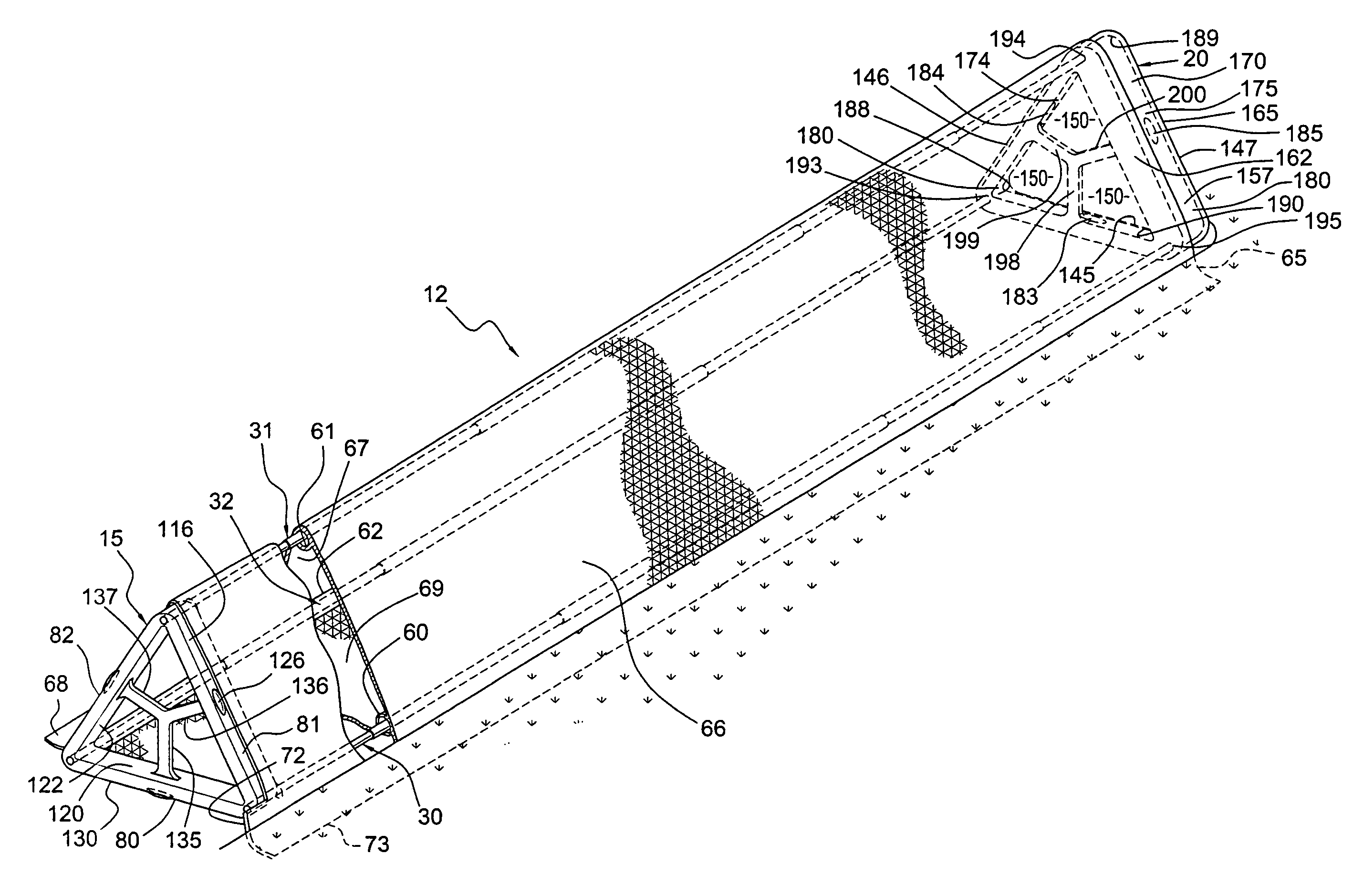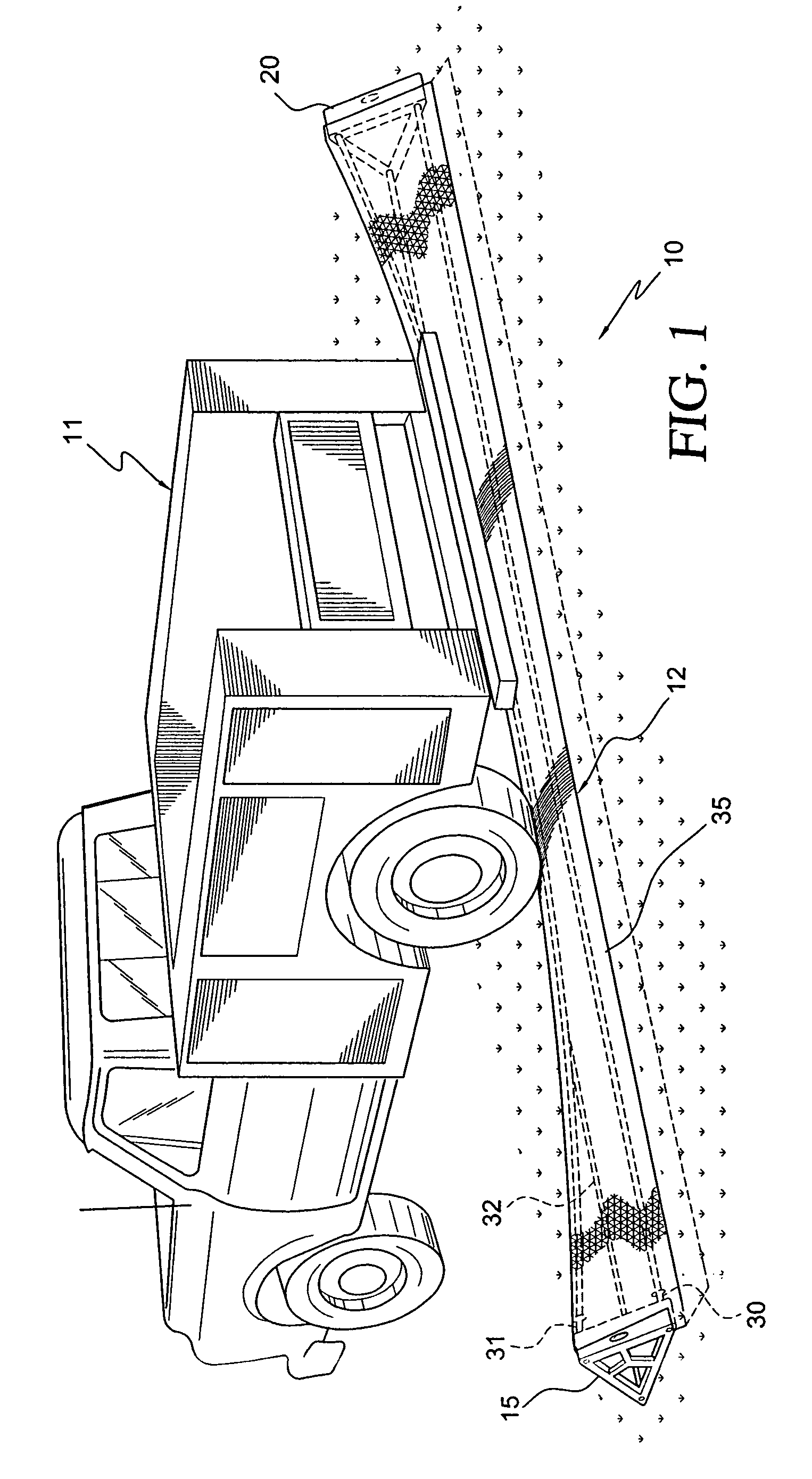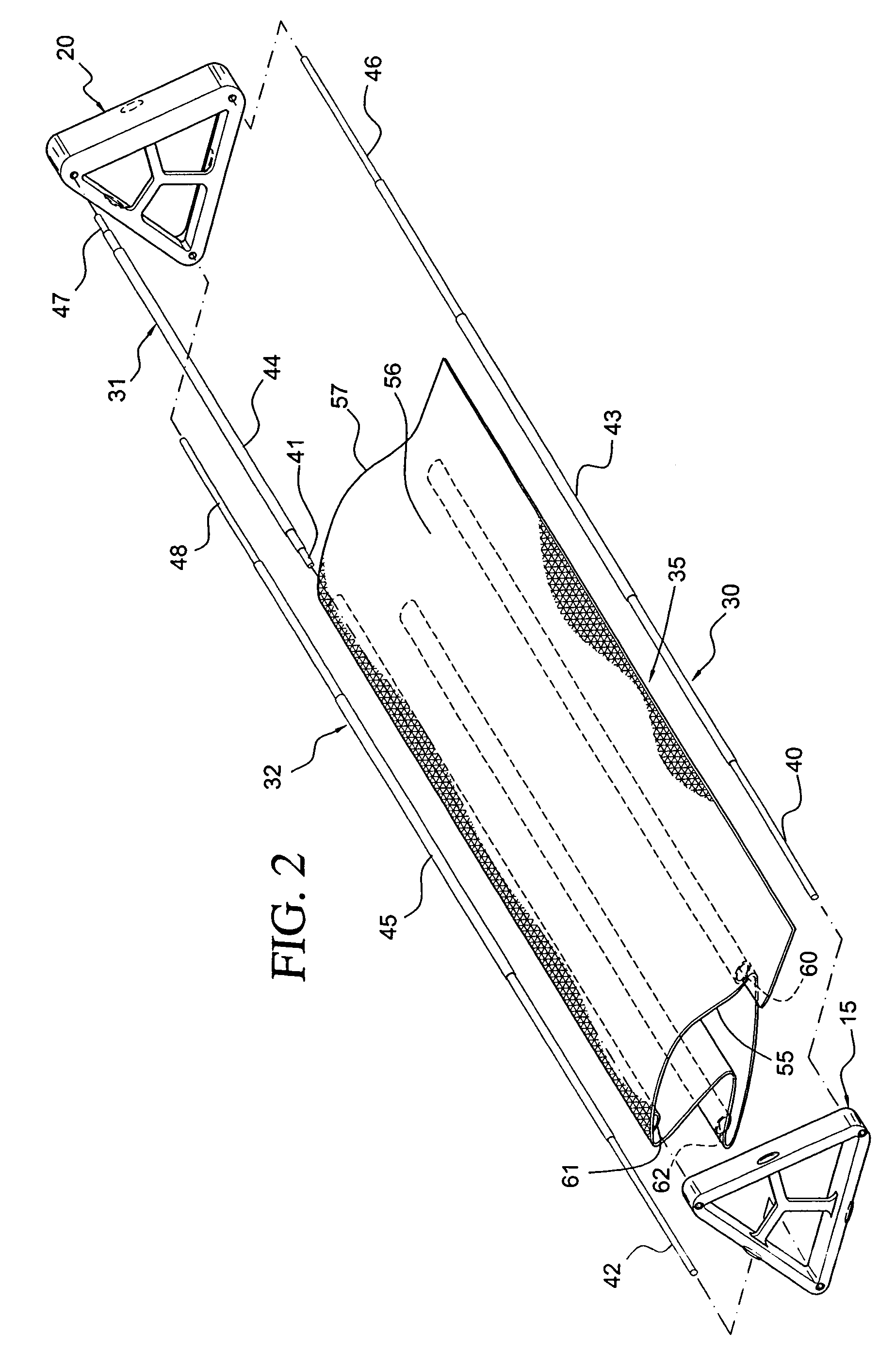Silt fencing system
a technology of silt fences and panels, applied in the field of fences, can solve the problems of limiting the transportability of fences, difficult installation of fences, and inefficient silt fences, and achieve the effects of convenient transportation, convenient disassembly and assembly of fence sections, and easy bend or flex
- Summary
- Abstract
- Description
- Claims
- Application Information
AI Technical Summary
Benefits of technology
Problems solved by technology
Method used
Image
Examples
Embodiment Construction
[0021]With initial reference to FIG. 1, a silt fencing system 10 constructed in accordance with the present invention is shown being driven over by a truck 11 leaving a construction site. Silt fencing system 10 includes a fencing section 12 that is collapsible as shown. Fencing section 12 comprises a triangularly shaped first framing member or male member 15, a triangularly shaped second framing member or female member 20, tension rods 30-32 and a fencing material 35. As shown in FIG. 1, tension rods 30-32 are collapsible, allowing a truck to drive over fencing section 12 without destroying fencing section 12. It is preferred that tension rods 30-32 are of such a length that gives flexibility to fencing section 12. The length of tension rods 30-32 are able to bend without affecting male member 15 and female member 20, while fencing material 35 drops with tension rods 30-32. Once the truck has passed, fencing section 12 re-assumes its original form.
[0022]Referring to FIG. 2, tension ...
PUM
 Login to View More
Login to View More Abstract
Description
Claims
Application Information
 Login to View More
Login to View More - R&D
- Intellectual Property
- Life Sciences
- Materials
- Tech Scout
- Unparalleled Data Quality
- Higher Quality Content
- 60% Fewer Hallucinations
Browse by: Latest US Patents, China's latest patents, Technical Efficacy Thesaurus, Application Domain, Technology Topic, Popular Technical Reports.
© 2025 PatSnap. All rights reserved.Legal|Privacy policy|Modern Slavery Act Transparency Statement|Sitemap|About US| Contact US: help@patsnap.com



